Royal connections
The Cambridge Dictionary will guide you how to pronounce and define it – kwiːnz ˈplæt.ɪ.nəm ˈdʒuː.bɪl.iː – but how is Cambridge University Press & Assessment connected to Her Majesty The Queen’s Platinum Jubilee?

Our links to the Monarchy date back almost 500 years to the moment King Henry VIII of England granted the University of Cambridge the right to print ‘all manner of books’, laying the foundations for what would become Cambridge University Press. Today, we hold Royal Letters Patent as The Queen's Printer, further strengthening links to the Crown that have grown during our long history.
This year marks the 70th anniversary of the accession of Queen Elizabeth II to the throne in 1952. Her Majesty is now the longest-reigning British monarch, the longest-reigning female monarch in history and the world’s longest-reigning incumbent monarch.
Cambridge University Press was one of three publishers to produce orders of service for The Queen’s Coronation, which took place in Westminster Abbey on 2 June 1953, in front of 8,251 guests, including official representatives from 129 nations.
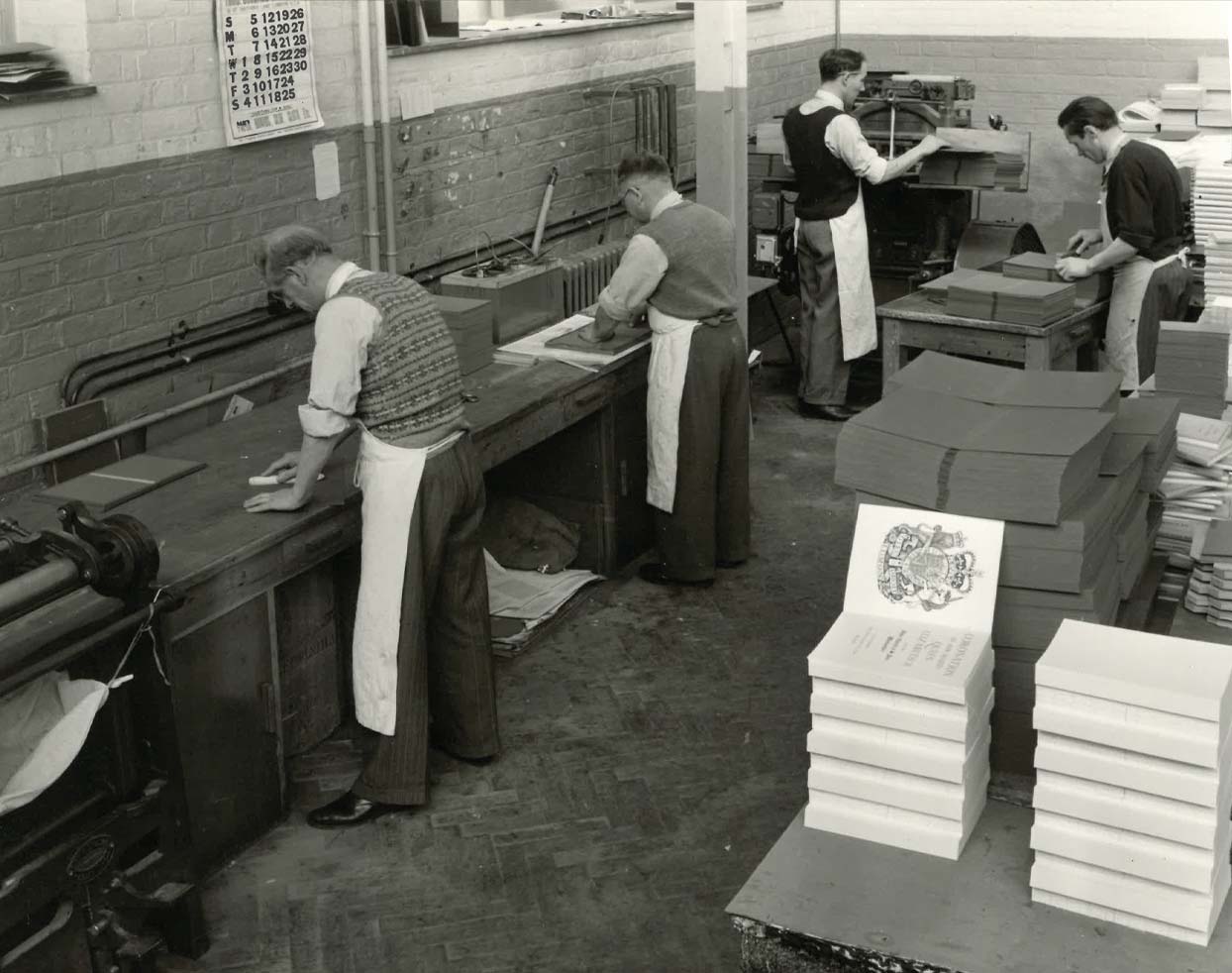
We had done the same in 1937 for the Coronation of The Queen’s father, George VI. The honour was due to our position as one of the two ‘Privileged Presses’ in the UK. This is a status we have held since 1775, when the Copyright Act granted us and Oxford University Press the right to print the Authorised, or King James Version of the Bible, the 1662 Book of Common Prayer and a variety of liturgical material authorised by the Church of England.
This included the order of service for The Queen’s Coronation, which we printed alongside Eyre & Spottiswoode, who were at that time the Queen’s Printer, and Oxford University Press. We also produced orders of service for the Mass held on the eve of the ceremony, and for celebratory services held in churches around the world.
The Press Museum, housed at our headquarters in Cambridge, displays an original order of service with pages open at the moment when the Archbishop of Canterbury placed the St. Edward's Crown on The Queen’s head.
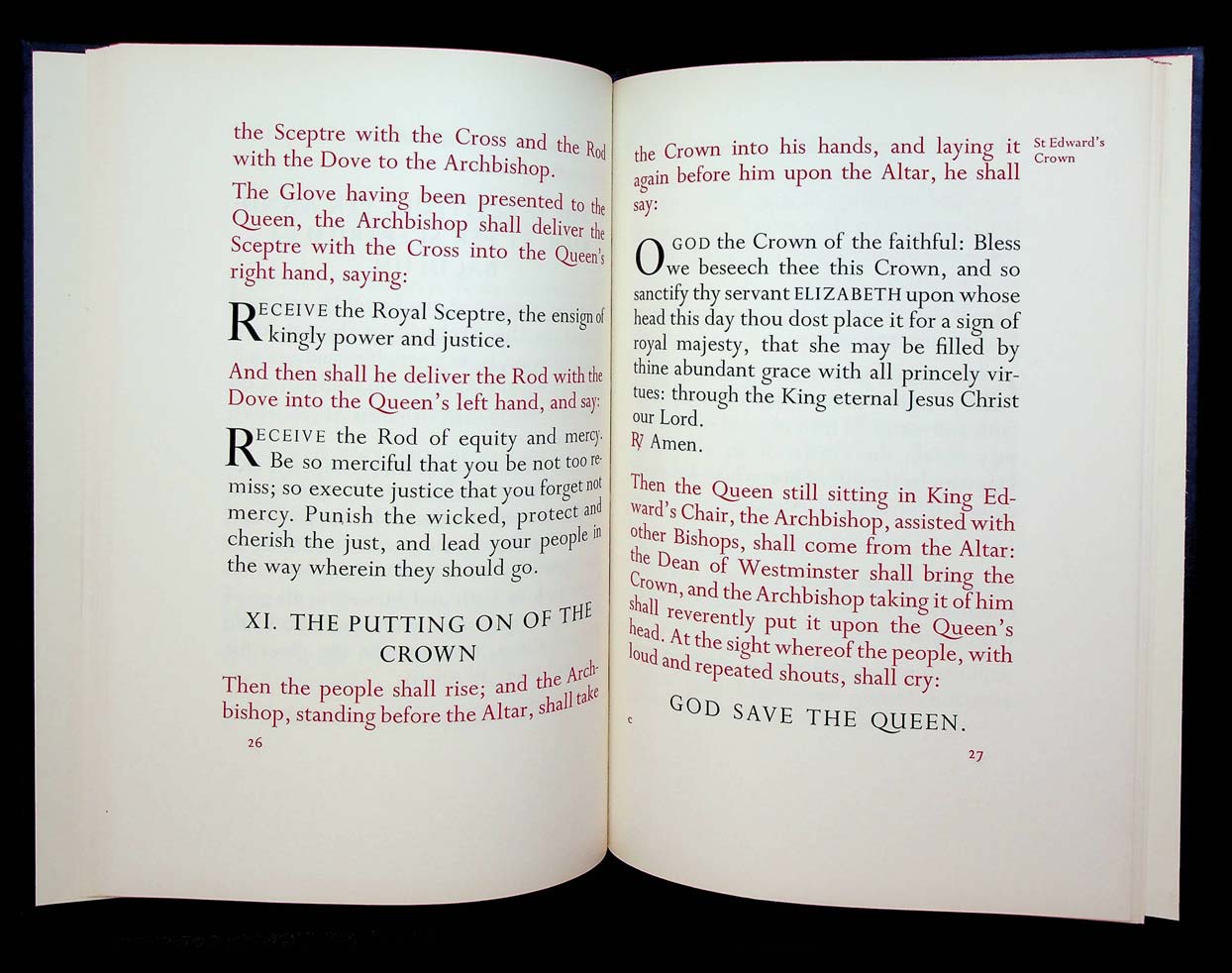
The Queen’s accession required changes to the Book of Common Prayer for prayers relating to the royal family. On 29 February 1952, Clarence House instructed the Press to make changes from ‘King’ to ‘Queen’, ‘George’ to ‘Elizabeth’ and ‘Sovereign Lord’ to ‘Sovereign Lady’.
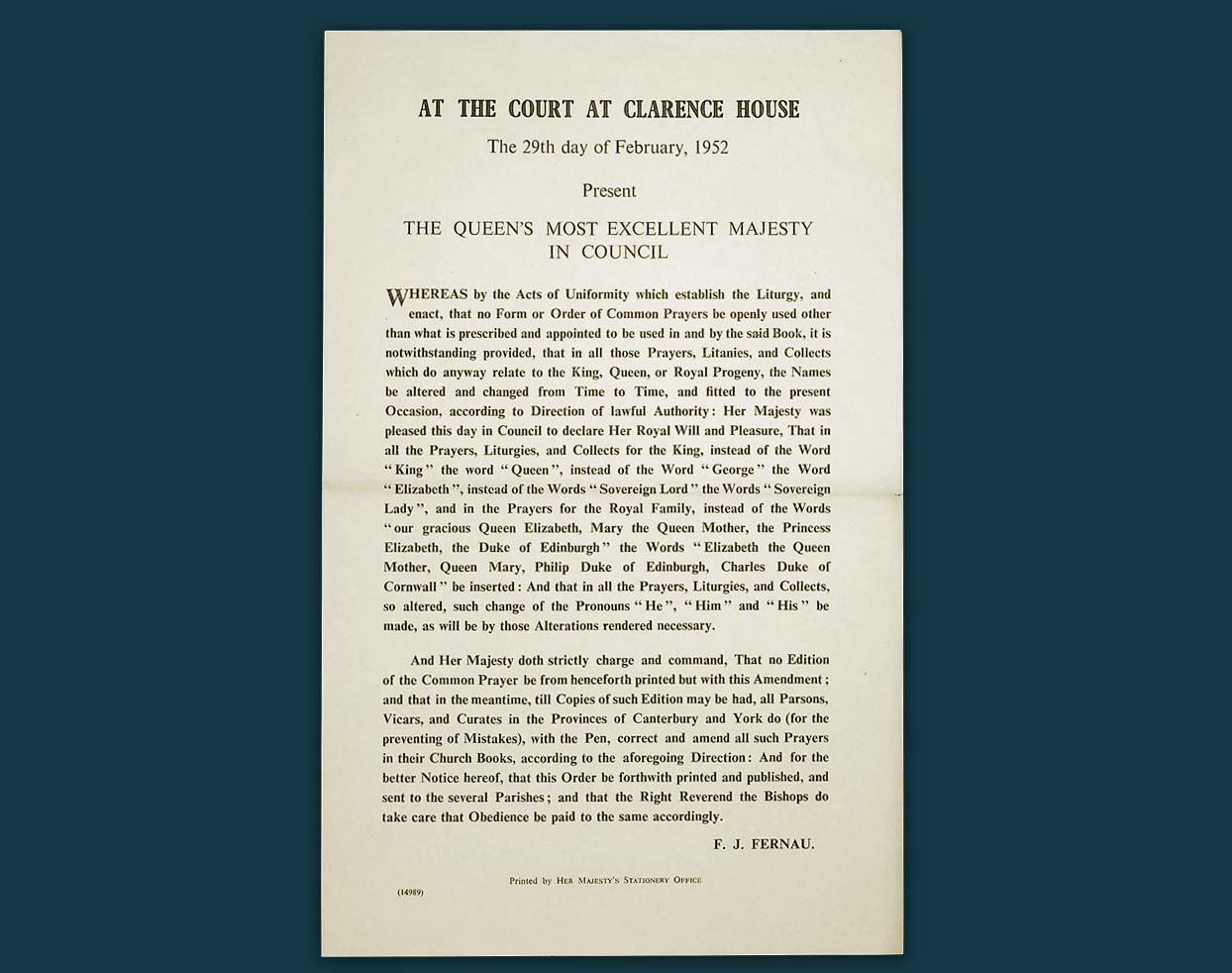
The Platinum Jubilee is a chance for us to celebrate our long association with the Monarch, which dates back to 1534, when Letters Patent issued by King Henry VIII of England gave the University of Cambridge the right to print ‘all manner of books’ and laid the foundations for Cambridge University Press. ‘The University Printer’ is a title still held by the Chief Executive of Cambridge University Press & Assessment.
This link was strengthened by the Act of 1775 and further cemented in 1990 when we took over the Bibles list of Eyre & Spottiswoode and took on its role as the Queen’s Printer. This confers the responsibility for administering the Crown’s rights in the Authorised Version of the Bible in England, Wales and Northern Ireland, controlling or licensing its publication on behalf of the Crown.
The Queen’s Printer
In the late 19th and early 20th centuries, it was common practice for the Privileged Presses to publish a variety of liturgical material. This included major state events, such as funerals and coronations, as well as lots of services and prayers (for example, in time of war) which were authorised by the Church of England. While the Privileged Presses have a right to produce this material, for the Royal Printer it is a duty. From 1845, that responsibility was held by Eyre & Spottiswoode, which became Queen’s Printer under Queen Victoria in that year. Cambridge University Press became The Queen's Printer in 1990, when we took over the bibles publishing of Eyre & Spottiswoode. The Eyre & Spottiswoode archives are held within the Cambridge University Press archive in Cambridge University Library.
Royal visits
Cambridge itself was first declared a royal borough in 1209, the same year in which the University of Cambridge was founded. Jumping forward to the 20th Century and His Late Royal Highness The Duke of Edinburgh was Chancellor of the University until 2011, further deepening the historic ties between the royal family, the university and the city.
In 1981 the Press’s new offices – named the Edinburgh Building in his honour – were opened by The Queen, who unveiled a plaque to mark the occasion before the royal couple met with Press employees. The Edinburgh Building plaque was designed by Will Carter, who also designed The Queen’s bookplate. His letter cutting also adorns a range of buildings in Cambridge, including the University Printing House, and his elegant designs established a distinctive style for the covers of Cambridge University Press books.
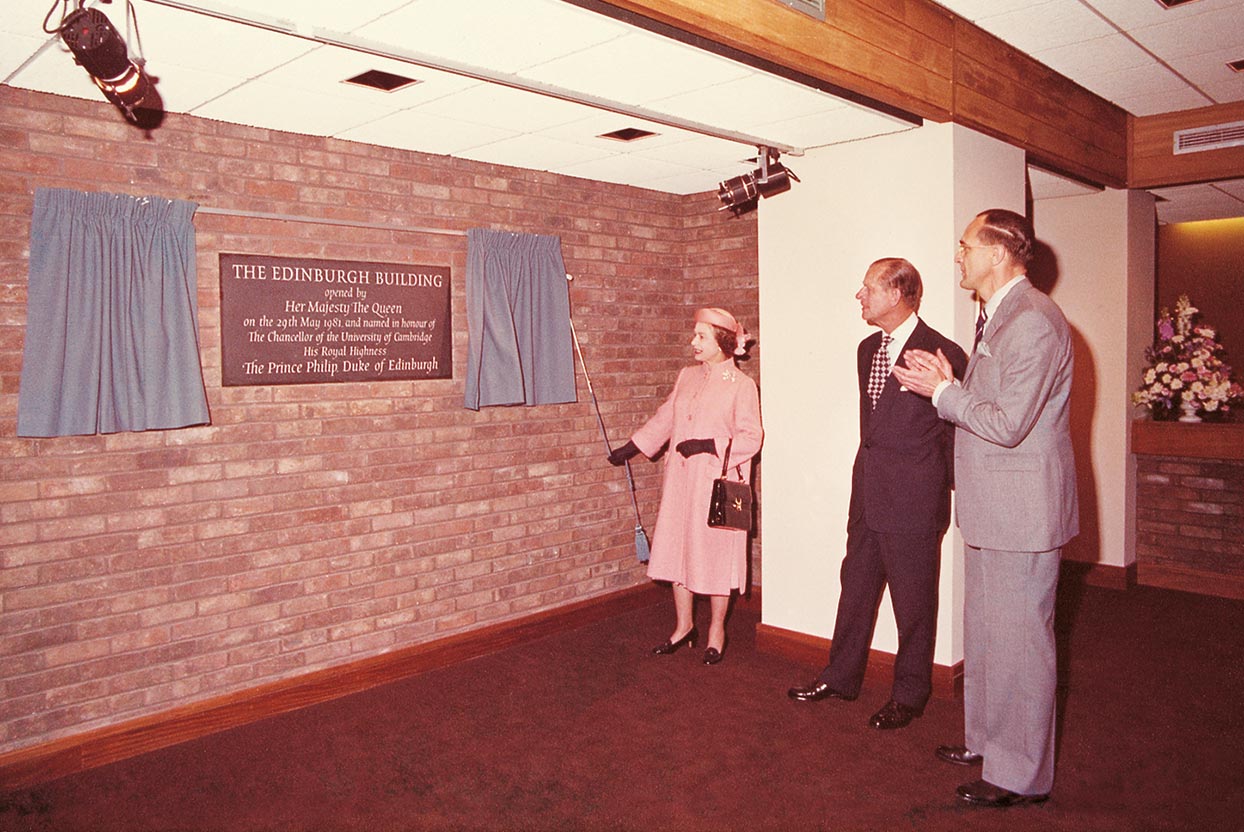
In his role as Chancellor of the University, His Late Royal Highness The Duke of Edinburgh also visited Cambridge Assessment in its previous incarnation as the University of Cambridge Local Examinations Syndicate (UCLES).
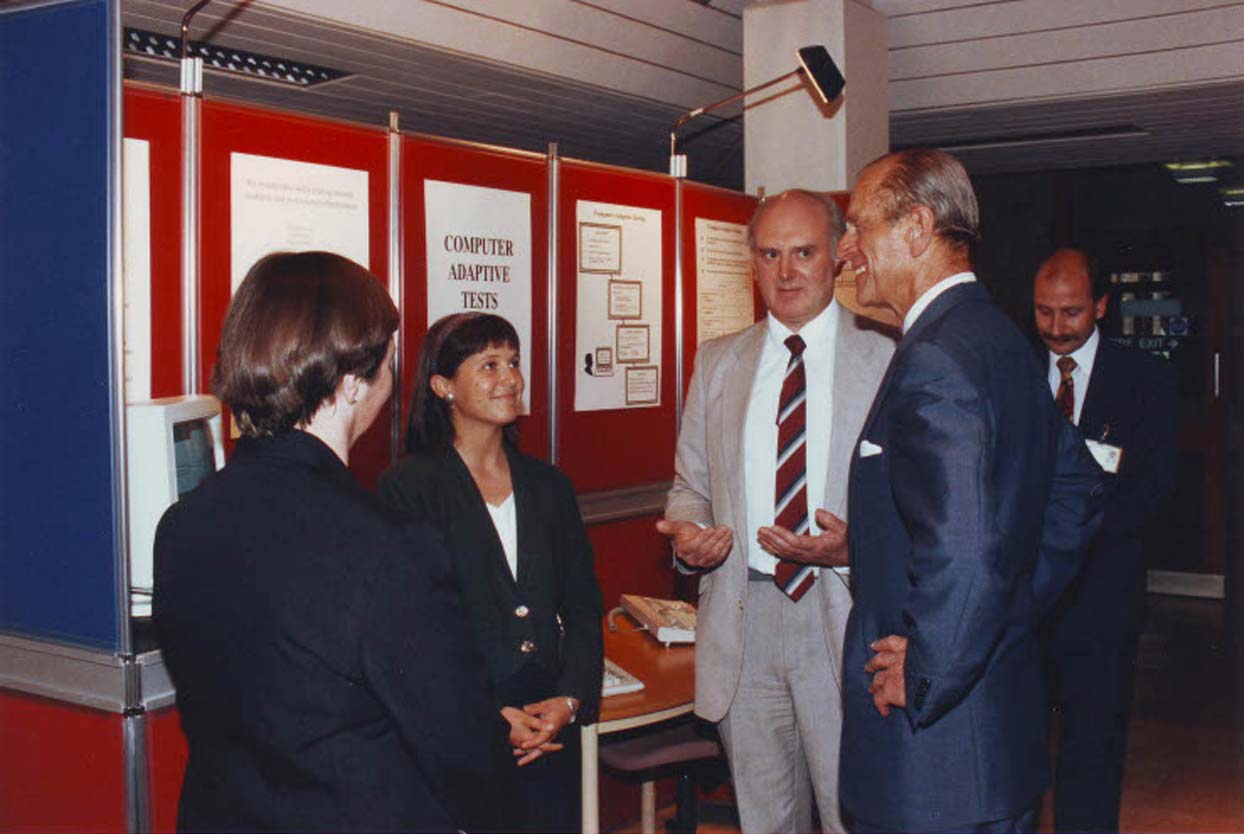
Cambridge University Press & Assessment congratulates Her Majesty The Queen on Her Platinum Jubilee.
